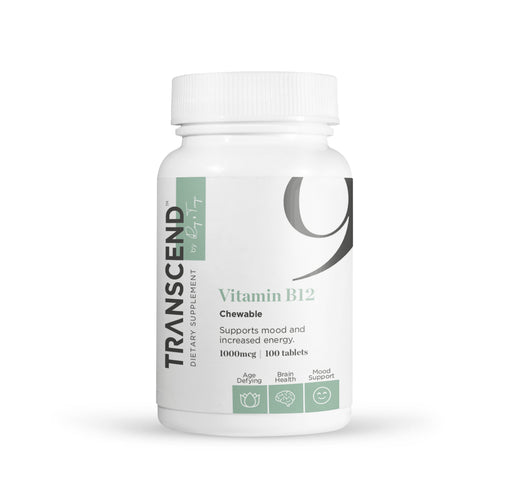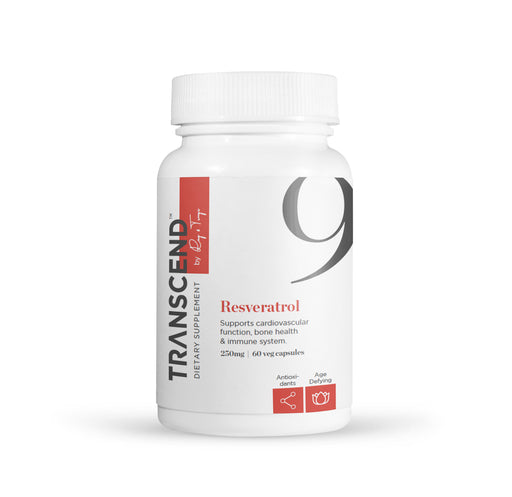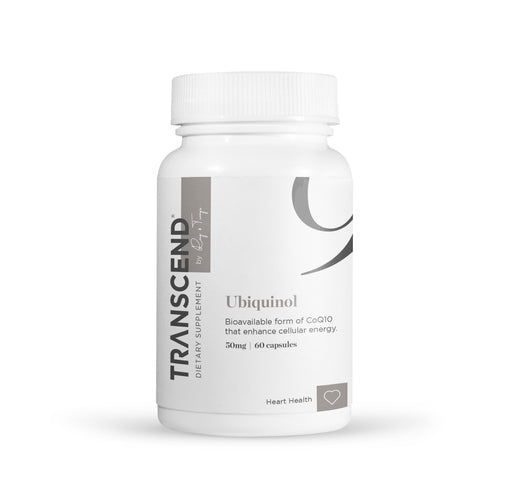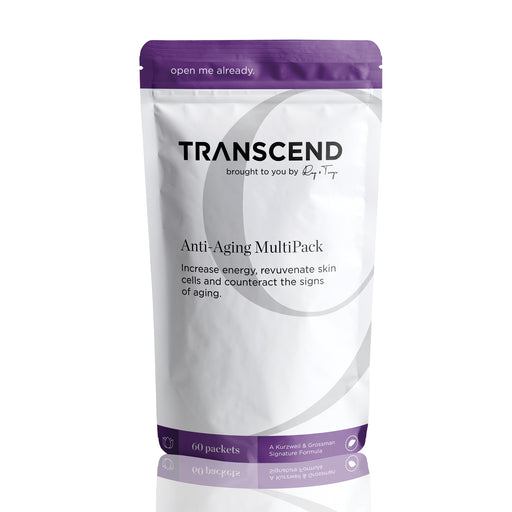
Vitamin B-12, Sublingual
Increased energy Improve mood Fight fatigue Common deficiency Better absorption Vitamin B12 (also called cobalamin) is one of eight water-solu...
View full details
Our bodies are designed to naturally process and eliminate toxins. Specifically, our kidneys, liver, lungs, colon, lymph system, and skin work around the clock to detect and remove toxins from our bloodstream. This is no small job given that we are surrounded by toxins (pesticides, fertilizers, mercury in fish, particulates in air pollution, lead from water pipes, etc.). In the worst cases, toxins can overwhelm our bodies. The food we eat, the water we drink, the air we breathe, and the materials that surround us, all play a role in our exposure. However, in the 2030s, this is all going to change. As nanotechnology transforms one industry after another, we are going to see a drop in environmental toxins and an increase in our body's ability to fight them. Until then, there are some basic steps that you can take to reduce toxins in your diet and your home.
Unfortunately, it is impossible to eliminate all toxins from our lives. As long as we use plastics and rely on modern farming for food, toxins will persist. They pop up in surprising places. Take “fast fashion" for example. Fashion trends have always come and gone, but today they are more fleeting than ever. Driven by manufacturers that overproduce low quality, cheap clothing, these trends lead to overconsumption and an abundance of waste. The amount of chemicals used to produce and dye cheap textiles is inordinate, making fast fashion one of the largest polluters of clean water in the world.
The Promise of Nanotechnology
While still in its infancy, research and development of nanoscience is expanding into every industry including food, fashion, manufacturing, and medicine. Within ten to twenty years we will use it to grow vegetables indoors year-round, make our own clothing, and build all household items with our own personal molecular assemblers (imagine 3D printing on a molecular level). This is going to reduce the need for factories, shipping, and industrial materials which in turn will lead to a decrease in toxic chemicals. And as nanotechnology merges with medicine, our bodies will be able to fight toxins like never before.
2030s: Putting Robots In Our Bloodstream
Nano is a unit prefix meaning “one billionth.” One nanometer is one billionth of a meter. To give you an idea of just how small that is, the head of a pin is about a million nanometers wide. At the nanoscale, scientists are manipulating objects that are more than one-millionth the size of the period at the end of this sentence. Their goal is to eventually build nanorobots (aka nanobots) that will function like today’s robots – sensing data, processing information, taking action, and communicating with each other – all at the scale of a molecule. Ray and Terry describe this as Bridge Three on the road to life extension. They predict nanobots will swim in our blood stream, perform medical tasks with precision, deliver drugs straight to the source, and drill through clogged arteries in the 2030s. Nanobots will also detect and eliminate toxins from our bodies, ultimately replacing the function of our non-sensory organs.
In his forthcoming book, The Singularity Is Nearer, Ray writes:
“The 2030s will usher in the third phase of life extension, which will be to use nanotechnology to overcome the limitations of our biological organs altogether. As we enter this phase, we’ll greatly extend our lives, allowing people to far transcend the normal human limit of 120 years.”
"One major human health application of nanotechnology will be medical nanorobots. These will be made from diamondoid parts [a nanosized diamond substance] with onboard sensors, manipulators, computers, communicators, and power supplies. To maintain our bodies and otherwise counteract health problems, each of us will need hundreds of billions of nanobots. Each one will be about the size of a cell. With nanobots we will be able to augment and eventually replace our non-sensory organs, which function to keep our bodies strong and our brains healthy. Consider what these non-sensory organs do: they either place substances into the blood supply (or lymph system) or remove them. For example, the lungs put in oxygen and take out carbon dioxide. The kidneys take out toxins.”
The Current State of Nanoscience
While nanobots are still a decade or more away, scientists are making strides in understanding and using nanoparticles. Today, the smallest medical robot comes from researchers at the University of Texas at San Antonio. Measuring just 120 nanometers across, the nanocomposite particles can be controlled by external magnetic fields that move cells to align with one another and push cells to different locations. This means these nanoparticles have the potential to deliver potent medications (drugs that cannot be administered systemically) directly to small, targeted regions within the body.
Much of today’s research is focused on effective ways of “driving” nanobots within the body. Nano-scale batteries don’t exist, which means scientists need to come up with an alternative engine. One leading school of thought is to use an external device that applies either magnetic, light, or acoustic fields to power nanobots. Another is to control them from within the body, with chemically active particles, enzymes, or micro-organisms, such as bacteria.
The nanotechnology revolution isn't going to appear out of nowhere. Nanoscale materials are already in many everyday commercial products like lightweight sunscreens, fabrics that repel water, and glue that gets stronger in extreme heat. Nanotech additives and treatments are currently enabling lightweight ballistic energy deflection in personal body armor; they're creating "smart fabrics" that monitor our health and capture solar energy; and they're improving the durability and resilience of baseball bats, tennis rackets, bicycles, and motorcycle helmets.
Preparing for An Exponential Future
While the idea of nanobots may sound like something out of a movie, decades of data show smooth and steady exponential advancement of computation leading to a nanotechnology revolution in the next ten to twenty years. Since 1939, the price-performance, capacity, and bandwidth of computation have roughly doubled every year. Take cell phones as an example. Thirty years ago, they were big, clunky devices that simply made phone calls and were only owned by the rich and famous. Today, most people around the world can buy a smart phone that connects them to all human knowledge for a few hundred dollars. The amount of computation that once took up an entire floor of a building now fits in your pocket. And soon, what now fits in your pocket will fit inside a blood cell and will be far more powerful.
The idea of swallowing robots raises a lot of questions. Fear of new technology is normal. When electricity was introduced into homes in the 19th century, many people were too afraid to use it. U.S. president, Benjamin Harrison, refused to touch newly installed light switches in the White House for fear of being shocked. Remember the initial fear of giving up your personal banking information to shop online, paying a stranger for a ride, or taking a vacation in a random person's house? Thanks to Amazon, Uber, and Airbnb these have all become commonplace. As new technologies are tested and refined, they quickly become accepted into everyday lives as though they were always there.
As scientists and innovators continue to lead the way toward a nanotechnology revolution, now is the time to live your healthiest life. Be mindful of toxins, reduce your exposure to toxic chemical as best as you can, and make smart choices to help your body eliminate them. Being proactive with your health today will set you up to take full advantage of nanotechnology breakthroughs in the future.

Increased energy Improve mood Fight fatigue Common deficiency Better absorption Vitamin B12 (also called cobalamin) is one of eight water-solu...
View full details
Combat internal aging Protect cells from radiation damage Increase antioxidant capacity Take with lecithin for better absorption Optimal dose for...
View full details
2022 update: Future batches of this product will use a Ubiquinol product that is a greenish capsule rather than a red softgel Bioavailable form o...
View full details
A Kurzweil + Grossman Formula Continued Synergy between Science and Convenience Convenient dosage packets Top anti-aging products Increase energy...
View full details
Leave a comment